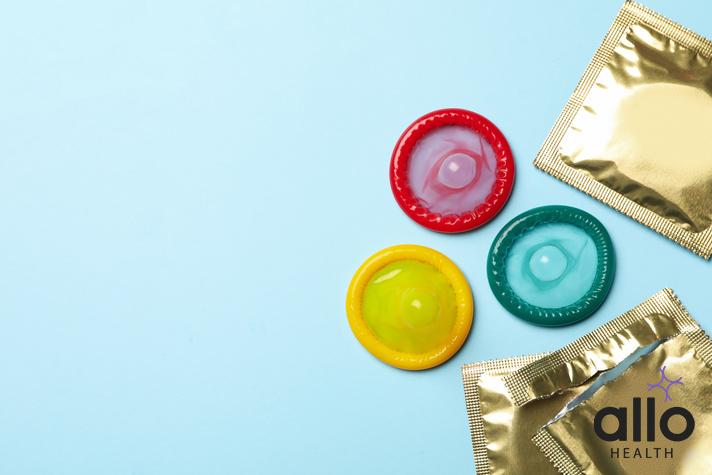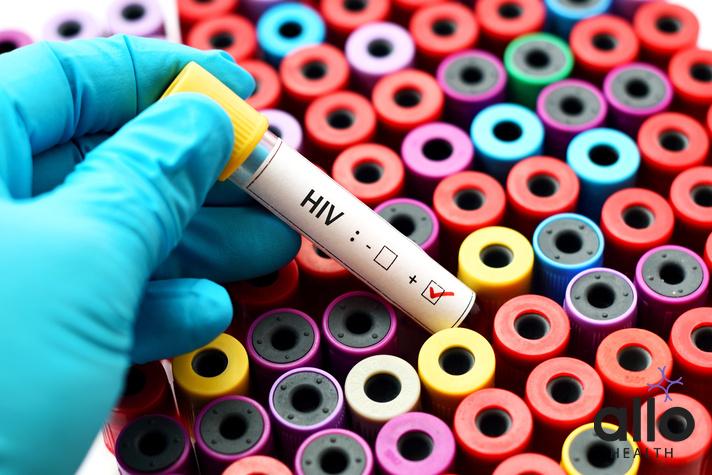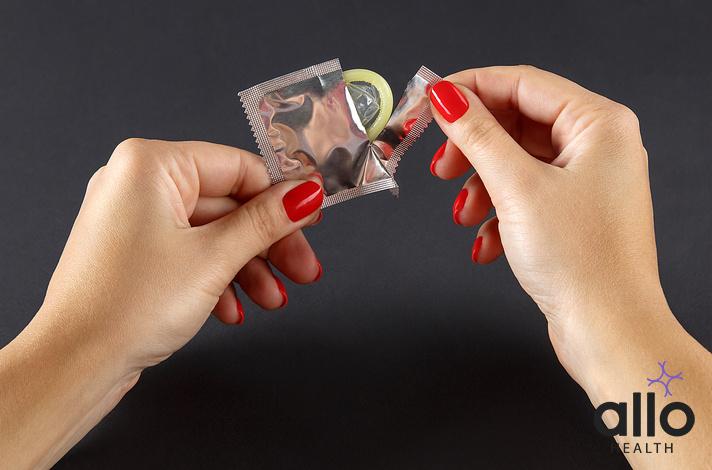Condom Broke HIV: Risks, Prevention, and What to Do Next

Allo Health is dedicated to personalized well-being, offering support and trusted information tailored to individual health goals. The platform emphasizes human-generated content, led by a distinguished medical team of experts, including physicians and sexual health specialists. Their commitment to credibility involves rigorous fact-checking, authoritative research, and continuous updates to ensure accurate, up-to-date information. Allo Health's unique approach goes beyond conventional platforms, providing expert-led insights and a continuous commitment to excellence, with user feedback playing a crucial role in shaping the platform's authoritative voice.

Dr. Aditi completed her undergraduate medical education at AJIMS, Mangalore, after which she worked in multi-speciality hospitals with COVID patients and in the Pain and Palliative medicine department. Driven by her experiences, she developed a keen interest in psychiatry. Dr. Aditi believes that mental health is just as, if not more important, than physical health.
Why This Was Upated?
Our experts continually monitor the health and wellness space, and we update our articles when new information became available.
Updated on 16 March, 2024
- Article was updated as part of our commitment to diversity, equity, and inclusion.

"The following blog article provides general information and insights on various topics. However, it is important to note that the information presented is not intended as professional advice in any specific field or area. The content of this blog is for general educational and informational purposes only.
Book consultation
The content should not be interpreted as endorsement, recommendation, or guarantee of any product, service, or information mentioned. Readers are solely responsible for the decisions and actions they take based on the information provided in this blog. It is essential to exercise individual judgment, critical thinking, and personal responsibility when applying or implementing any information or suggestions discussed in the blog."
Discovering that a condom has broken during intercourse can be a distressing experience, particularly with the potential risk of HIV transmission. It’s crucial to handle such situations with care and prompt action. This article provides essential steps to take if you find yourself in this scenario, aiming to mitigate anxiety and reduce the risk of HIV and other sexually transmitted infections (STIs).
Stay Calm and Assess the Situation
First and foremost, remain calm. Panicking can cloud judgment and delay the actions needed. Immediately cease sexual activity to prevent further exposure. Understand that while the risk of HIV transmission is a concern, several factors influence this risk, including the HIV status of the involved partners, the type of sexual act, and the presence of other STIs.
- Immediately Stop and Communicate: As soon as you realize the condom has broken, stop the sexual activity. This reduces the risk of further exposure to bodily fluids.
- Assess the Exposure Risk: Consider the type of sexual act involved, as some acts have a higher risk of HIV transmission than others. For instance, anal intercourse carries a higher risk compared to vaginal intercourse.
- Consider the Timing: The risk of transmission can also depend on when the condom broke during the sexual activity. If the breakage occurred at the end, the exposure might be more significant.
- Evaluate Partner’s HIV Status: If you or your partner’s HIV status is known and one is positive, the risk of transmission is present. The risk is significantly reduced if the HIV-positive partner is on effective antiretroviral therapy (ART) and has an undetectable viral load.
- Think About Other STIs: The presence of other sexually transmitted infections can increase the risk of HIV transmission. Symptoms like sores or bleeding increase susceptibility to the virus.
Taking these immediate steps helps manage the situation more effectively and sets the stage for the necessary follow-up actions, such as seeking medical advice and getting tested.
Communicate with Your Partner
Open and honest communication with your sexual partner is crucial after experiencing a condom break. Here’s how you can effectively communicate and support each other through this process:
- Initiate the Conversation with Sensitivity: Recognize that this can be a stressful situation for both of you. Approach the conversation with empathy, understanding that both of you are dealing with the potential consequences.
- Share Known HIV/STI Statuses: If you are aware of your HIV status or if you have other STIs, share this information transparently. Encourage your partner to do the same. This knowledge is vital for assessing the risk and deciding on the next steps.
- Discuss Testing and Healthcare: If either of you is unsure of your HIV status, propose getting tested together. It can be comforting to support each other through the testing process. Discuss also seeking medical advice regarding Post-Exposure Prophylaxis (PEP) if the situation warrants it.
- Plan for Future Prevention: Use this as an opportunity to talk about how you can prevent similar incidents in the future. Discuss using condoms correctly, the possibility of using additional forms of protection, and regular STI testing as part of your sexual health routine.
- Express Your Feelings and Concerns: It’s important to communicate your feelings about the incident and listen to your partner’s concerns. This situation can be emotionally taxing, and expressing your emotions can be an important step in processing the event together.
- Seek Support if Needed: If the conversation is challenging or if you’re struggling with the next steps, consider seeking support from a healthcare provider, counselor, or sexual health expert. They can offer guidance, mediate discussions, and provide information on preventive measures and treatments.
Seek Post-Exposure Prophylaxis (PEP)
Post-exposure prophylaxis (PEP) involves taking HIV antiretroviral medications within 72 hours after potential exposure to the virus to significantly reduce the risk of infection. Here’s how to navigate the process of obtaining and starting PEP:
- Act Immediately: Time is of the essence with PEP. Its effectiveness decreases the longer you wait after the exposure. Aim to start PEP as soon as possible, ideally within hours of exposure.
- Find a Healthcare Provider or Emergency Room: You can access PEP at hospitals, emergency rooms, urgent care clinics, or sometimes through your healthcare provider. If you’re unsure where to go, local health departments or sexual health clinics can direct you to the nearest facility offering PEP.
- Understand the Treatment Regimen: PEP typically involves taking a combination of HIV medications for 28 days. Your healthcare provider will explain how and when to take the medication, as well as potential side effects.
- Discuss Your Situation Candidly: When you visit the healthcare provider, describe the exposure incident in detail. This information helps the provider assess your risk and determine the most appropriate treatment regimen.
- Complete the Full Course: It’s crucial to complete the entire 28-day course of PEP, even if you feel well. Stopping treatment early can reduce its effectiveness.
- Follow-Up Care: Schedule follow-up appointments after you complete the PEP regimen. You’ll need to be tested for HIV initially, at the end of the treatment, and again after three and six months to ensure the virus has not been transmitted.
- Consider Other STIs: Since you’re at risk for other sexually transmitted infections (STIs) as well, ask your healthcare provider about testing for STIs.
- Insurance and Cost Concerns: Discuss any concerns about the cost of PEP with your healthcare provider. In many places, insurance plans cover PEP, and assistance programs may be available to help cover costs for those without insurance.
- Mental Health Support: The emotional impact of potential HIV exposure can be significant. Don’t hesitate to seek support from mental health professionals, support groups, or hotlines tailored to individuals undergoing PEP treatment.

Get Tested for HIV and Other STIs
Understanding your HIV status and being aware of any other sexually transmitted infections (STIs) you may have is crucial for your health and the health of your partners. Here’s how to approach testing:
- Know the Testing Types and Timing: The window period for HIV tests—the time from exposure to when a test can accurately detect an infection—varies depending on the type of test used. Rapid tests and antibody tests might not detect recent infections. Nucleic acid tests (NATs) can detect an infection sooner but are more costly and not routinely used for screening. Discuss with your healthcare provider which test is right for you based on your last potential exposure.
- Schedule Initial Testing: As soon as you suspect you’ve been exposed to HIV or another STI, schedule an appointment for testing. Early testing for STIs can prevent complications and further transmission to partners.
- Understand Follow-Up Testing: For HIV, initial testing should be followed by additional tests at one month and three months post-exposure. In some cases, a final test at six months is recommended to confirm your status.
- Consider Testing for Other STIs: Since the presence of STIs can increase the risk of HIV transmission, get tested for common STIs like chlamydia, gonorrhea, syphilis, and hepatitis. These tests are often done through urine samples or swabs.
- Discuss Testing Frequency with Your Provider: If you’re at continued risk for HIV or STIs (e.g., through ongoing unprotected sex, multiple partners, or a partner with HIV), discuss how often you should be tested. Regular testing is key to maintaining your sexual health.
- Handle Test Results Responsibly: If your tests for HIV or other STIs come back positive, it’s important to follow your healthcare provider’s advice for treatment and inform any sexual partners so they can also get tested and treated if necessary.
- Maintain Confidentiality and Support: Remember that test results are confidential. Seek support from friends, family, or support groups if you’re dealing with a positive diagnosis, and ensure you have the emotional and medical support you need.
- Prevent Future Exposures: Use the testing process as an opportunity to learn more about how to protect yourself and your partners from HIV and STIs. This can include using condoms correctly, considering pre-exposure prophylaxis (PrEP) if you’re at high risk for HIV, and engaging in regular sexual health check-ups.
Practice Safe Sex in the Future
Using this experience as a catalyst for change, you can take several steps to ensure safer sexual encounters going forward:
- Educate Yourself on Proper Condom Use: Learn the correct way to use condoms to maximize their effectiveness in preventing HIV and other STIs. This includes using a new condom for each act of sexual intercourse, checking the expiration date, and ensuring the condom is put on and removed correctly.
- Communicate Openly with Partners: Before engaging in sexual activity, discuss your STI status, testing history, and when you were last tested. This conversation can help you make informed decisions about the precautions you need to take.
- Regular STI Screening: Make regular testing a part of your routine sexual health care, especially if you have multiple partners, are in a non-monogamous relationship, or your partner has HIV. Early detection of STIs can prevent health complications and reduce the risk of transmission.
- Consider Pre-exposure Prophylaxis (PrEP): If you are at high risk for HIV, talk to your healthcare provider about PrEP. This daily medication can significantly reduce the risk of HIV infection when taken consistently.
- Limit the Number of Sexual Partners: Reducing the number of people you have sex with decreases your overall risk of STI exposure. Mutual monogamy with a partner who has been tested and is known to be uninfected also lowers risk.
- Avoid Substance Abuse Before Sex: Alcohol and drugs can impair judgment and lead to unsafe sexual practices. Avoiding substance use before or during sexual activity can help you make safer choices.
- Use Dental Dams for Oral Sex: Although the risk of HIV transmission through oral sex is low, other STIs can be transmitted this way. Using dental dams can reduce this risk.
- Seek Vaccination: Vaccines are available for some STIs, such as Hepatitis B and HPV (Human Papillomavirus), which can lead to genital warts and cervical cancer. Talk to your healthcare provider about whether these vaccines are appropriate for you.
- Educate Yourself and Others: Stay informed about sexual health and safe sex practices. Share this knowledge with friends, partners, and family to help them make safer choices as well.
Dealing with a Condom Break: What Steps to Take Next
- Stop Immediately: Cease sexual activity as soon as you realize the condom has broken. Avoid yanking the condom off to prevent any further complications.
- Assess the Situation: Determine the extent of the breakage and semen exposure. Understanding these factors helps in deciding the appropriate response for each partner.
- For the Receptive Partner:
- Remove semen from the vagina or rectum, if applicable.
- Gently wash the area with soap and water to reduce the risk of infection.
- For the Insertive Partner:
- Wash the penis, scrotum, and groin area with mild soap and warm water.
- Urinate, as suggested may reduce the risk of certain STIs.
- Consider Pregnancy Concerns: If pregnancy is a concern, emergency contraception options like copper intrauterine devices (IUDs) or morning-after pills are available.
- Schedule STI Testing: Get tested for STIs, including HIV, after the incident. Wait for the appropriate window period before undergoing testing.

Preventative Tips for Future Condom Use
- Check Expiration Dates: Ensure condoms are within their expiration dates and discard expired ones.
- Proper Storage: Store condoms in a cool, dry place to maintain their integrity.
- Careful Opening: Open condom packets carefully with scissors to avoid damaging the condom.
- Learn Correct Usage: Familiarize yourself with the correct way to put on and size condoms.
- Use Compatible Lubricants: Use water-based lubricants with latex condoms and avoid oil-based lubricants.
- Avoid Double-Bagging: Never use two condoms simultaneously, as it increases friction and the likelihood of breakage.
By following these steps and adopting safe sex practices, individuals can reduce the risk of condom failure and protect their sexual health effectively.
Tips to Prevent Condom Breakage
- Check Expiration Dates: Always check the expiration date on the condom packaging before use. Using expired condoms increases the risk of breakage due to degraded latex or materials.
- Proper Storage: Store condoms in a cool, dry place away from direct sunlight and extreme temperatures. Avoid storing them in wallets, glove compartments, or other places where they may be exposed to heat, which can weaken the latex.
- Careful Opening: Open condom packets carefully using your fingers or scissors. Avoid using sharp objects like teeth or fingernails, as they can puncture the condom accidentally.
- Check for Damage: Before use, visually inspect the condom for any signs of damage, such as tears, holes, or brittleness. If you notice any defects, discard the condom and use a new one.
- Size Matters: Ensure you are using the correct condom size for your anatomy. Condoms that are too tight may be more prone to breakage, while condoms that are too loose may slip off during intercourse. Experiment with different sizes to find the best fit.
- Use Lubrication: Apply water-based or silicone-based lubricants to the outside of the condom to reduce friction and prevent tearing. Avoid oil-based lubricants, as they can weaken latex condoms and increase the risk of breakage.
- Avoid Air Bubbles: Squeeze the tip of the condom to remove any air bubbles before rolling it down the shaft of the penis. Air bubbles can increase the likelihood of breakage during intercourse.
- Roll Down Carefully: Roll the condom down the shaft of the penis smoothly and evenly, taking care to avoid twisting or bunching. Ensure there is enough space at the tip to collect semen and reduce the risk of breakage.
- Limit Reuse: Use a new condom for each act of intercourse. Reusing condoms, even if they appear undamaged, increases the risk of breakage and transmission of STIs.
- Communication with Partner: Communicate openly with your partner about condom use and sexual health. Discuss any concerns or preferences regarding condom use to ensure mutual understanding and compliance.
By following these tips and practicing safe sex consistently, you can reduce the risk of condom breakage and protect yourself and your partner from unintended pregnancies and sexually transmitted infections.
Conclusion
A broken condom during intercourse can lead to worries about HIV and other STIs. By taking immediate action, communicating openly with your partner, and seeking medical advice, you can manage the situation effectively. Prevention, timely intervention, and education are key to maintaining sexual health and well-being.
Most Asked Questions
-
What should I do if a condom breaks during sex?
If a condom breaks during intercourse, stop immediately and carefully remove the condom. Assess the situation to determine the extent of the breakage and semen exposure. Follow appropriate steps for both the receptive and insertive partners to reduce the risk of infection.
-
How soon after a condom break should I seek medical advice?
It's essential to act quickly. Seek medical advice as soon as possible after a condom break to discuss potential risks and receive guidance on the next steps. Time-sensitive options like Post-Exposure Prophylaxis (PEP) may be available to reduce the risk of HIV transmission.
-
What should I do if I'm concerned about HIV transmission after a condom break?
If you're worried about HIV transmission, consider seeking immediate medical attention. Healthcare providers can assess your risk factors, offer HIV testing, and discuss options such as PEP, which can significantly reduce the risk of HIV infection if started within 72 hours of exposure.
-
How long should I wait before getting tested for HIV and other STIs after a condom break?
It's crucial to undergo testing for HIV and other STIs after a condom break, but timing depends on the specific infection and the type of test. HIV testing may be recommended immediately after the incident, followed by additional tests over several months. Consult with a healthcare provider for personalized guidance.
-
What can I do to prevent condom breaks in the future?
To minimize the risk of condom breaks, practice proper condom usage, including checking expiration dates, storing condoms correctly, and using appropriate lubricants. Communicate openly with your partner about sexual health, consider additional forms of protection like pre-exposure prophylaxis (PrEP), and prioritize regular STI testing as part of your sexual health routine.








































